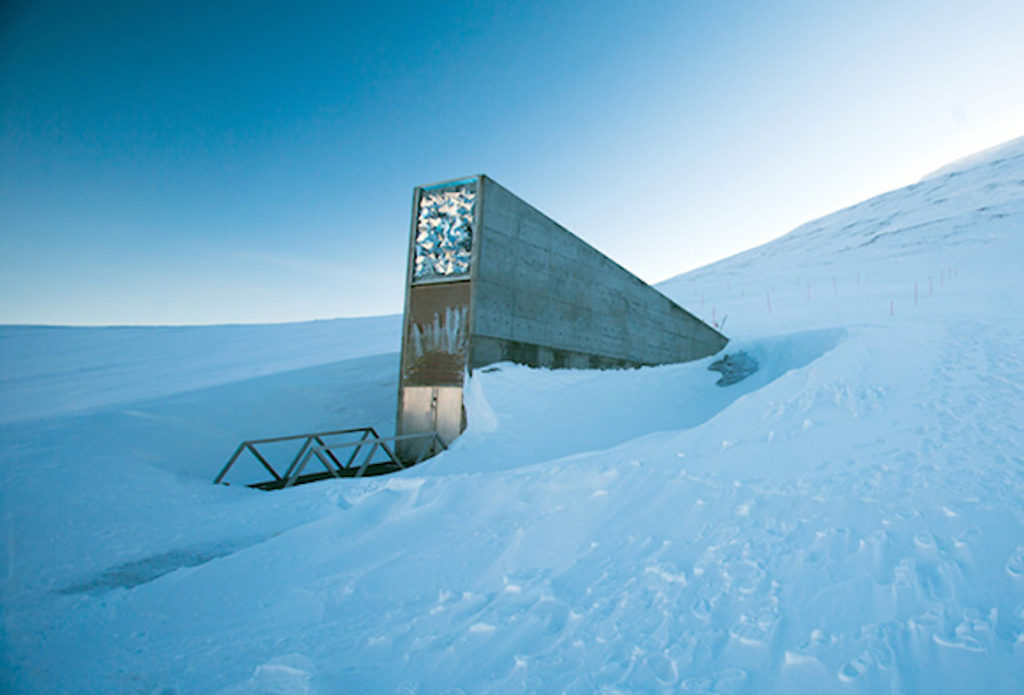Deep inside a mountain on a remote island in the Svalbard archipelago, halfway between mainland Norway and the North Pole, lies the Global Seed Vault.
It is a long-term seed storage facility, built to stand the test of time — and the challenge of natural or man-made disasters. The Seed Vault represents the world’s largest collection of crop diversity.
THE NEED
Worldwide, more than 1,700 genebanks hold collections of food crops for safekeeping, yet many of these are vulnerable, exposed not only to natural catastrophes and war, but also to avoidable disasters, such as lack of funding or poor management. Something as mundane as a poorly functioning freezer can ruin an entire collection. And the loss of a crop variety is as irreversible as the extinction of a dinosaur, animal or any form of life.
THE PURPOSE
It was the recognition of the vulnerability of the world’s genebanks that sparked the idea of establishing a global seed vault to serve as a backup storage facility. The purpose of the Vault is to store duplicates (backups) of seed samples from the world’s crop collections.
Permafrost and thick rock ensure that the seed samples will remain frozen even without power. The Vault is the ultimate insurance policy for the world’s food supply, offering options for future generations to overcome the challenges of climate change and population growth. It will secure, for centuries, millions of seeds representing every important crop variety available in the world today. It is the final back up.
THE STORAGE
The Seed Vault has the capacity to store 4.5 million varieties of crops. Each variety will contain on average 500 seeds, so a maximum of 2.5 billion seeds may be stored in the Vault.
Currently, the Vault holds more than one million samples, originating from almost every country in the world. Ranging from unique varieties of major African and Asian food staples such as maize, rice, wheat, cowpea, and sorghum to European and South American varieties of eggplant, lettuce, barley, and potato. In fact, the Vault already holds the most diverse collection of food crop seeds in the world.
The focus of the Vault is to safeguard as much of the world’s unique crop genetic material as possible, while also avoiding unnecessary duplication. It will take some years to assemble because some genebanks need to multiply stocks of seed first, and other seeds need regenerating before they can be shipped to Svalbard.
For a complete overview of the samples stored in the Vault, please visit NordGen’s public online database.
A temperature of -18ºC is required for optimal storage of the seeds, which are stored and sealed in custom made three-ply foil packages. The packages are sealed inside boxes and stored on shelves inside the vault. The low temperature and moisture levels inside the Vault ensure low metabolic activity, keeping the seeds viable for long periods of time.
You can see all of the countries on the globe and their contributions to the seed bank here: https://www.croptrust.org/our-work/interactive-map/
To learn more, you can see the Svalbard Seed Vault website here: https://www.croptrust.org/our-work/svalbard-global-seed-vault/


Would you like to share your thoughts?
Your email address will not be published. Required fields are marked *